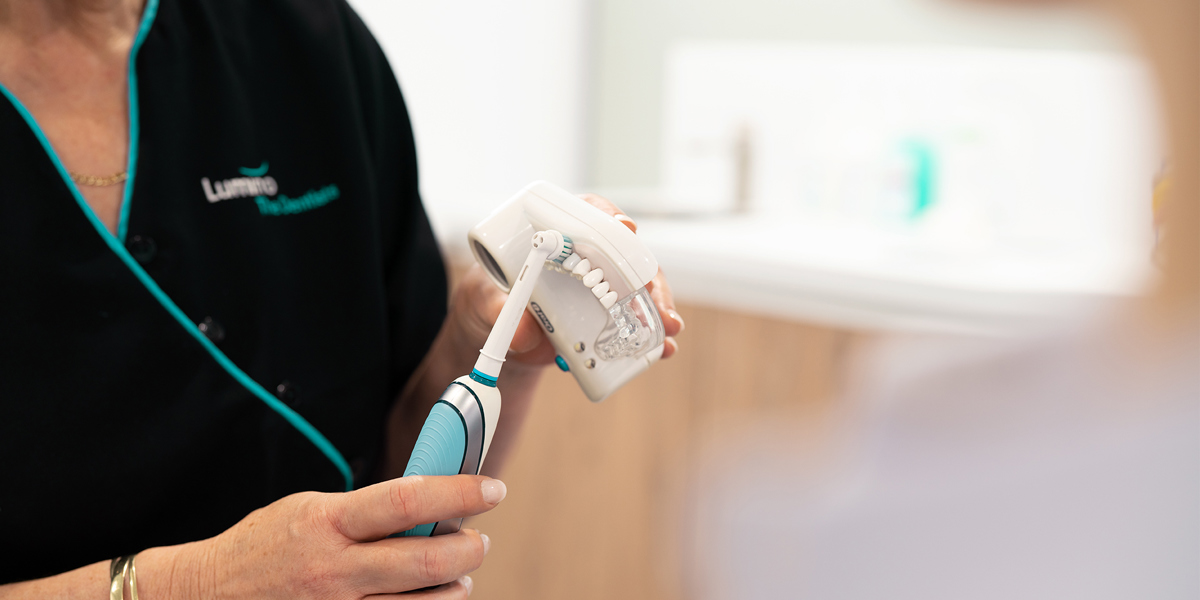
Looking after your smile is so important. It's more than brushing twice daily and visiting your dentist and hygienist twice a year.
Taking proper care of your teeth and gums also involves good oral hygiene at home. If you follow a good oral health routine at home, alongside regular dentist visits you can help prevent future problems from occurring.
Here are our top three tips to successfully achieve a healthy, happy mouth:
Eat and drink at set meal times throughout the day. Every time you eat or drink you will have a 30-minute period of time of acid invasion in your mouth that follows.
- Do not brush during this period of time, as you will then be effectively brushing acid into your teeth.
- Avoid grazing continually throughout the day.
- Promote saliva (your natural acid neutralizer) with sugar-free chewing gum. Keep your diet low in acid. For example, reduce sugary drinks, citric fruit, etc.
- Baking soda rinses post meals – because it is alkaline and will reduce the acid level.
- Drink plenty of water.
Floss daily.
- It’s essential. Flossing is not just to remove food, which is a common misconception.
- Around the circumference of each tooth you have a ditch between the gum and the tooth which is a breeding ground of bacteria. This needs to be shaken up every day (every 24 hours) to disturb the environment, otherwise negative bacteria will start to set in and infect the gums with disease on some level.
- Make sure your technique is correct, this can be checked by your dental hygienist.
Brush with an extra soft head and electric toothbrush if possible.
- Brush twice daily.
- Just like in any industry, there are a lot of gimmicks we are bombarded with in the dental world – which does not make it easy for choice. Electric toothbrushes with rotating/oscillating heads are revolutionary.
- Make sure you always go for a ‘sensitive’ or ‘EXTRA soft’ head as sometimes the heads labelled ‘soft’ are actually ‘medium’ in disguise. This is because you are predominately working on the gums and you need to use something safe and with confidence. Tooth brushing is more about gum massage and you are mostly working around the gum line which is where most plaque starts to form.
- Make sure your technique is correct, again this can be checked by your dental hygienist.